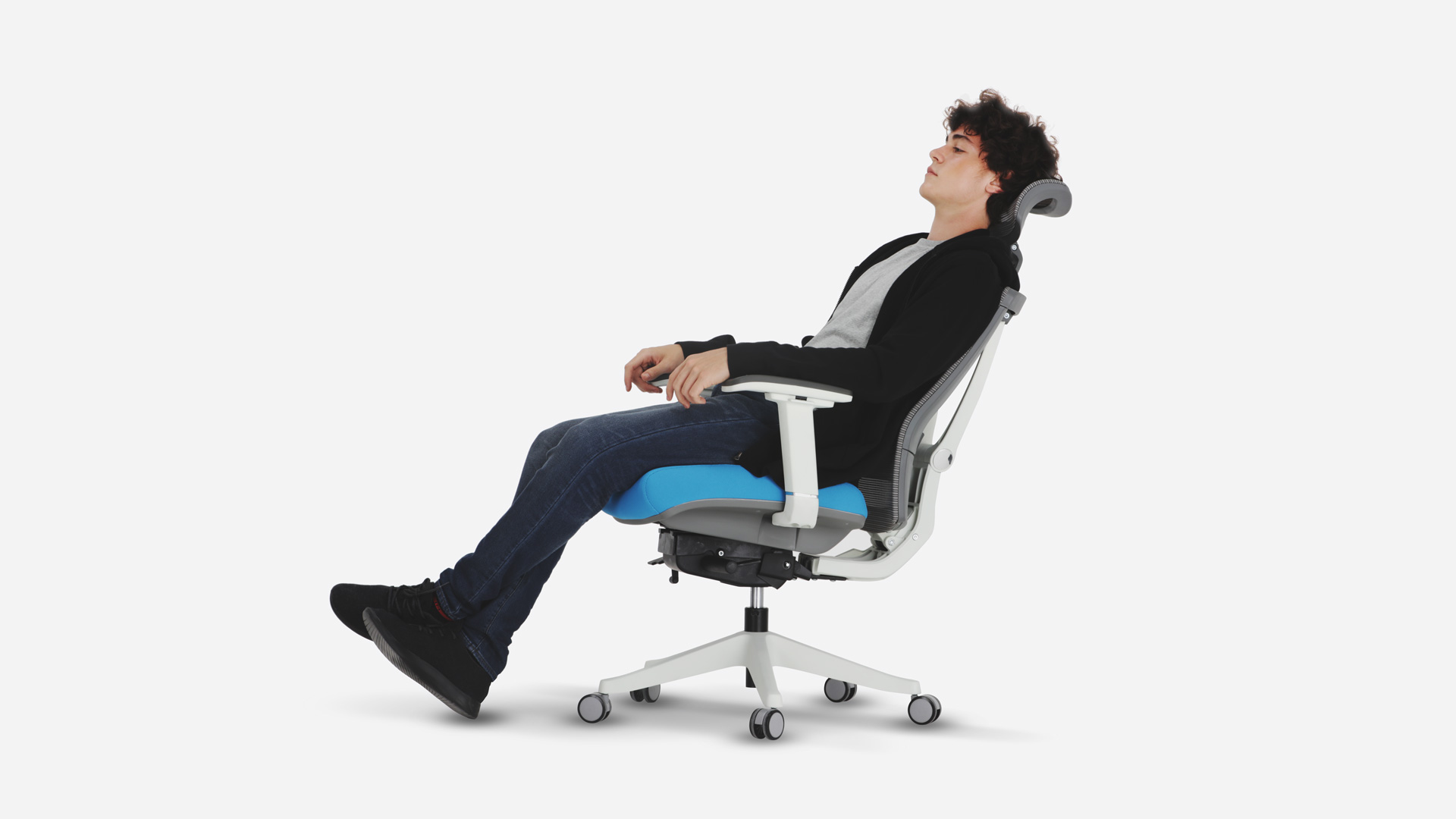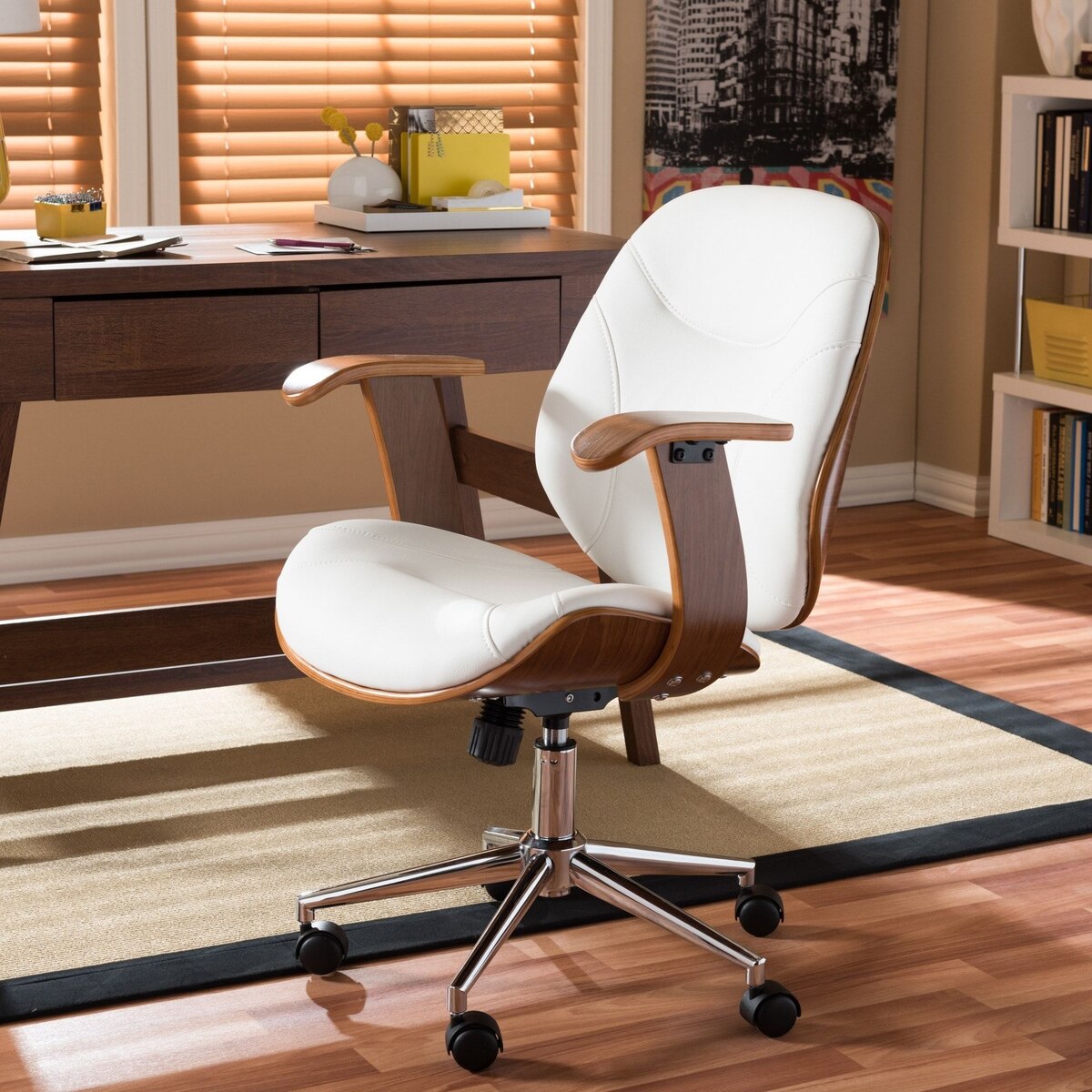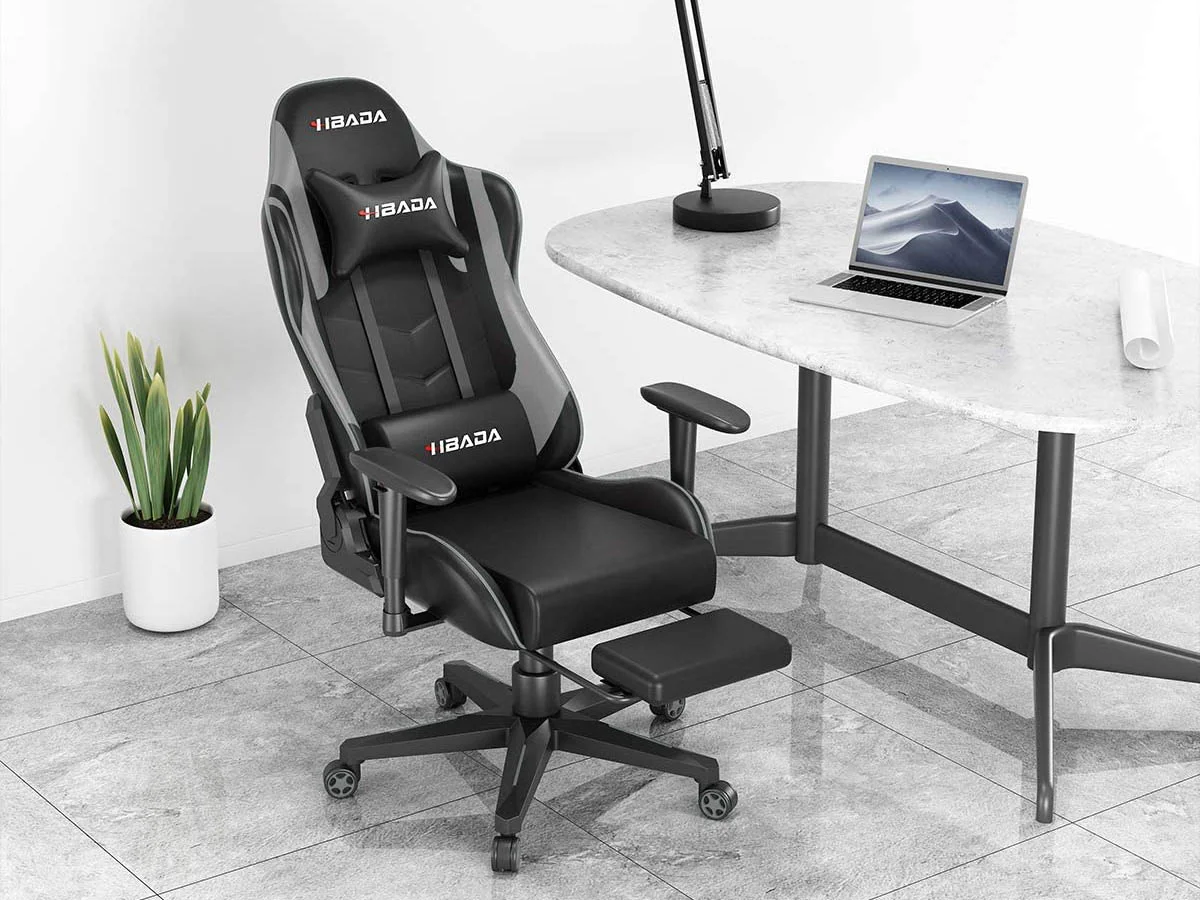Home>Furniture & Design>Office Furniture>How To Lock An Office Chair


Office Furniture
How To Lock An Office Chair
Modified: January 14, 2024
Learn how to lock an office chair for better stability and comfort. Discover the best techniques and tips for securing your office furniture. Improve your workspace with effective chair locking methods.
(Many of the links in this article redirect to a specific reviewed product. Your purchase of these products through affiliate links helps to generate commission for Storables.com, at no extra cost. Learn more)
Introduction
Welcome to the world of office furniture, where comfort meets functionality and design. Office chairs play a crucial role in ensuring ergonomic support and enhancing productivity in the workplace. One of the essential features of an office chair is its ability to be locked into a stationary position, providing stability and security for the user. Whether you are deep in thought during a brainstorming session or simply need to maintain a fixed position while working, knowing how to properly lock an office chair is a valuable skill.
In this comprehensive guide, we will delve into the intricacies of office chair locking mechanisms, the steps to effectively lock an office chair, and essential tips for maintaining a locked position. By the end of this journey, you will have a thorough understanding of the nuances involved in keeping your office chair securely in place, ensuring a comfortable and productive work environment.
So, let's embark on this enlightening exploration of office chair locking, where we unravel the secrets to achieving stability and support in the modern workplace. Whether you are a seasoned professional or a newcomer to the world of office furniture, this guide is designed to equip you with the knowledge and skills to master the art of locking an office chair. Let's dive in and discover the key to a secure and steadfast seating experience.
Key Takeaways:
- Mastering the art of locking an office chair ensures stability and support for a comfortable and productive work environment. Choose the right locking mechanism and follow simple steps to secure your chair effectively.
- Regular maintenance and care of the locking mechanism prolong the lifespan of your office chair, ensuring consistent support and stability. Follow manufacturer guidelines, keep moving parts clean, and adjust locking tension for optimal performance.
Read more: What Is A Task Chair Vs. Office Chair
Choosing the Right Locking Mechanism
When it comes to office chairs, the locking mechanism is a pivotal component that determines the chair’s stability and adaptability to various working conditions. Selecting the right locking mechanism is crucial for ensuring that your office chair meets your specific needs and preferences. There are several common types of locking mechanisms, each offering unique features and benefits:
- Tilt Lock: This mechanism allows the user to lock the chair in a specific tilt position, providing flexibility for leaning back or sitting upright. It is ideal for tasks that require varying degrees of reclining while maintaining a fixed tilt angle.
- Multi-Position Lock: A multi-position locking mechanism enables the user to secure the chair at different tilt angles, offering versatility for tasks that involve frequent changes in posture and position.
- Syncro Tilt Lock: This advanced mechanism synchronizes the movement of the seat and backrest, allowing for a smooth recline while keeping the seat cushion relatively level. It is well-suited for tasks that demand seamless transitions between sitting and reclining positions.
- Knee Tilt Lock: Designed to pivot from a point near the front of the seat, the knee tilt mechanism focuses on maintaining a consistent angle between the seat and backrest, providing excellent support for extended periods of sitting.
When choosing the right locking mechanism for your office chair, consider the nature of your work, preferred sitting positions, and the level of adjustability required for optimal comfort. Additionally, ergonomic factors such as lumbar support and seat depth adjustment should be taken into account to ensure that the locking mechanism complements the overall design of the chair.
By understanding the distinct characteristics of each locking mechanism, you can make an informed decision that aligns with your ergonomic needs and enhances your overall seating experience. The next step is to explore the essential steps for effectively locking an office chair, empowering you to make the most of your chosen mechanism and maximize your comfort and productivity in the workplace.
Steps to Lock an Office Chair
Locking an office chair is a straightforward process that varies depending on the type of locking mechanism equipped on the chair. Whether it’s a tilt lock, multi-position lock, syncro tilt lock, or knee tilt lock, the following steps provide a general guide to effectively secure your office chair in a stationary position:
- Adjust the Chair Position: Before locking the chair, ensure that it is positioned at a comfortable height and angle that suits your working preferences. This may involve adjusting the seat height, backrest angle, and armrest position to achieve an optimal seating arrangement.
- Engage the Locking Mechanism: Depending on the type of locking mechanism present, locate the lock control typically positioned beneath the seat or on the side of the chair. Engage the lock by firmly activating the mechanism, which may involve turning a knob, pressing a lever, or engaging a latch, depending on the specific design of the chair.
- Test the Stability: Once the locking mechanism is engaged, test the stability of the chair by gently applying pressure to the backrest and seat. Ensure that the chair remains securely in place without any unexpected movement or shifting. If the chair features multiple locking positions, adjust the tilt angle to your desired setting and verify the stability at each position.
- Customize the Locking Tension: Some office chairs offer the option to customize the locking tension to match individual preferences. If applicable, adjust the tension control to achieve the desired level of resistance when reclining or maintaining a fixed position. This feature enhances the adaptability of the chair to accommodate various user preferences.
By following these steps, you can effectively lock your office chair to suit your specific working requirements, ensuring a stable and supportive seating experience. It is important to refer to the chair’s user manual for detailed instructions tailored to the specific locking mechanism and adjustment features incorporated into the design.
As you become familiar with the locking process, you will gain confidence in utilizing the chair’s capabilities to enhance your comfort and productivity in the workplace. With the chair securely locked in your preferred position, you are ready to focus on your tasks with the assurance of a stable and accommodating seating arrangement.
To lock an office chair, locate the lever or knob underneath the seat and adjust it to the locked position. This will prevent the chair from reclining when you lean back.
Tips for Maintaining a Locked Office Chair
Once you have successfully locked your office chair into a stationary position, it is essential to maintain its stability and functionality for prolonged use. Implementing the following tips will help preserve the locked position of your chair and ensure a consistent level of support and comfort:
- Regular Inspection: Periodically inspect the locking mechanism and associated components to identify any signs of wear, loose fittings, or irregularities that may affect the chair’s stability. Addressing potential issues early can prevent unexpected malfunctions and maintain the effectiveness of the locking feature.
- Keep Moving Parts Clean: Clean the moving parts of the locking mechanism, such as levers, knobs, and adjustment controls, to remove dust, debris, or any obstructions that may hinder smooth operation. Regular cleaning contributes to the longevity and reliability of the locking mechanism.
- Adjust Locking Tension: If your office chair offers customizable locking tension, periodically review and adjust the tension settings to align with your comfort preferences. This ensures that the chair continues to provide the desired level of resistance and support, promoting a personalized seating experience.
- Follow Manufacturer Guidelines: Adhere to the manufacturer’s guidelines and recommendations for maintaining the locking mechanism and overall care of the office chair. This may include specific lubrication requirements, inspection intervals, and guidelines for preserving the functionality of the chair’s components.
- Utilize the Lock Wisely: Use the locking mechanism in accordance with its intended purpose, avoiding excessive force or abrupt movements that may compromise its integrity. Engage and disengage the lock with care to preserve its effectiveness and prevent premature wear.
- Seek Professional Assistance: If you encounter persistent issues with the locking mechanism or notice any irregular behavior, seek assistance from qualified professionals or the chair’s manufacturer. Prompt attention to potential issues can prevent further complications and ensure the ongoing reliability of the locking feature.
By incorporating these maintenance tips into your chair care routine, you can prolong the lifespan of the locking mechanism and sustain the secure and stable performance of your office chair. A well-maintained locking mechanism contributes to a comfortable and dependable seating experience, allowing you to focus on your work with confidence and support.
Remember that proper care and attention to the locking mechanism are essential for maximizing the longevity and functionality of your office chair, ultimately enhancing your overall comfort and productivity in the workplace.
Conclusion
Congratulations on completing this insightful journey into the world of office chair locking. Throughout this guide, we have explored the significance of choosing the right locking mechanism, the essential steps for effectively locking an office chair, and valuable tips for maintaining a locked position. By mastering these aspects, you have gained the knowledge and skills to optimize your seating experience and elevate your comfort and productivity in the workplace.
Understanding the diverse locking mechanisms available for office chairs empowers you to make informed decisions that align with your ergonomic needs and working preferences. Whether it’s a tilt lock for versatile reclining, a syncro tilt lock for seamless transitions, or a knee tilt lock for exceptional support, selecting the right mechanism is a crucial step towards achieving a personalized and supportive seating experience.
As you embark on the process of locking your office chair, the steps outlined in this guide provide a clear and comprehensive framework for securing the chair in your preferred position. By following these steps and exploring the customization options available, you can tailor the chair to accommodate your unique comfort requirements, ensuring a stable and accommodating seating arrangement.
Furthermore, the maintenance tips presented in this guide serve as a valuable resource for preserving the locked position of your office chair and sustaining the functionality of the locking mechanism. By incorporating regular inspections, cleaning, and adherence to manufacturer guidelines, you can prolong the lifespan of the locking feature and maintain a consistent level of support and stability.
Armed with this knowledge, you are well-equipped to navigate the intricacies of office chair locking with confidence and proficiency. Whether you are embarking on a new seating experience or seeking to optimize your existing chair, the insights gained from this guide will serve as a valuable companion in your quest for ergonomic comfort and productivity.
With your newfound expertise in office chair locking, you are poised to embrace the benefits of a secure and steadfast seating experience, allowing you to focus on your tasks with assurance and support. As you apply these principles to your daily work routine, may your office chair become a reliable ally in your pursuit of comfort and productivity.
Frequently Asked Questions about How To Lock An Office Chair
Was this page helpful?
At Storables.com, we guarantee accurate and reliable information. Our content, validated by Expert Board Contributors, is crafted following stringent Editorial Policies. We're committed to providing you with well-researched, expert-backed insights for all your informational needs.
















0 thoughts on “How To Lock An Office Chair”